




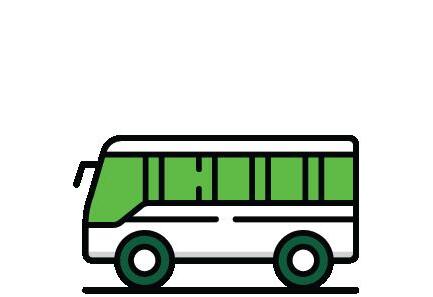





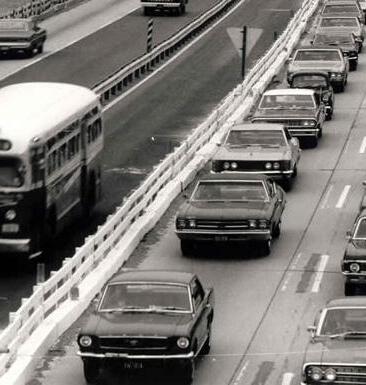

















There’s a saying that goes, “you aren’t stuck in traffic, you are traffic,” but what if you could magically escape the daily grind of driving through two of our region’s most congested highway corridors? That’s the promise of our Commuter Choice program, which reinvests toll revenues into projects that move more people through the I-66 and I-395/95 corridors.
Commuter Choice relies on a data-driven approach, evaluating proposed projects on how effectively they meet the legally required goals. Public feedback also plays an important role, giving people an opportunity to say how they think the proposals will improve their travels throughout our region.
That’s where you come in. We are accepting comments through May 13 on proposed projects in the I-66 corridor totaling $30 million. If approved, these projects would provide a variety of benefits, including:
• Continued funding for Fairfax Connector, Loudoun County Transit and OmniRide Commuter buses that offer fast reliable service and have seen rebounding ridership, as well as extension of a successful half-fare campaign on four OmniRide routes
• Improved service frequency for ART 75, which runs between Shirlington and Virginia Square
• Reinstatement of a program that lets Virginia Railway Express (VRE) passengers ride select Amtrak trains on the Manassas Line
• Completion of a funding award for a new VRE station in Crystal City
• Funding for new Fairfax Connector and OmniRide routes
• A study, in partnership with the Department of Rail and Public Transportation, to evaluate current and future travel needs in the I-66 corridor
Learn more about the projects and comment on our website: novatransit. org/programs/commuterchoice/commuter-choice-comments. You can also do so in Spanish: novatransit.org/programs/commuterchoice/ comentarios-commuter-choice.
Our Commissioners will review all public feedback and vote on the I-66 Program of Projects at their meeting in June.
 Executive Director
Executive Director
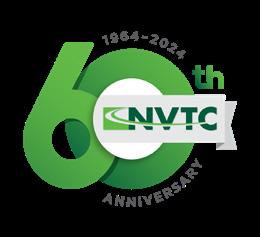



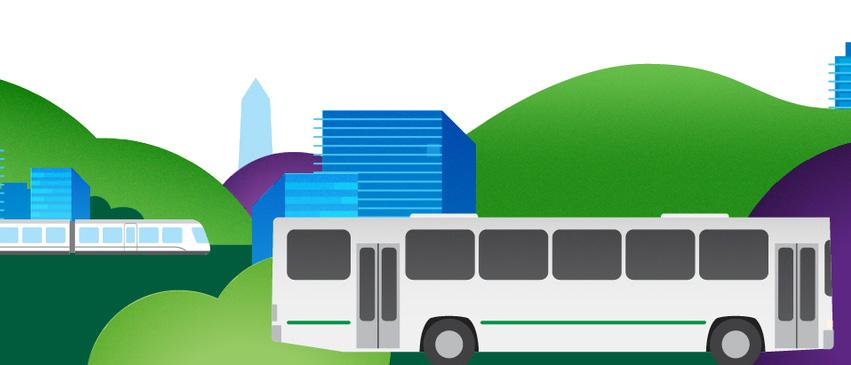


NVTC sent a letter to members of the General Assembly on April 12 asking them to reject Gov. Glenn Youngkin's amendment to the FY 2025-2026 budget that removes additional state funding to NVTC to match our local government contributions to Metro. Gov. Youngkin eliminated the $65 million the GA committed for FY 2025 and reduced the $84 million committed for FY 2026 to $35 million.
Faced with the Governor’s amendment, NVTC local jurisdictions would bear the full burden of the more than $119M increase in their Metro bills expected over the next two years, exhausting the local aid that is held in NVTC’s trust fund. NVTC’s jurisdictions are relying on the trust fund to cover the larger than expected Metro bills while a long term funding solution was studied by the General Assembly through SJ28, the Northern Virginia Transit Funding study.
NVTC also shared concerns with the procedurally complex and overarching reporting and approval conditions towards Metro that are included in the

amendment. These additional requirements would undo efforts to have clear lines of authority within Metro and add financial uncertainty to the flow of funding, disproportionately affecting NVTC and its jurisdictions.
When the General Assembly reconvened on April 17, they did reject all 233 budget amendments presented by the Governor. Gov. Youngkin and leaders in the House and Senate then announced that they are working on a new budget for FY 2025-2026. Leaders say they've been meeting with Youngkin to develop a compromise budget that will be presented on May 13.
NVTC will continue to work with the administration and our Northern Virginia delegation to ensure a restoration of the long-standing, shared commitment between our localities and the Commonwealth to fund Metro.





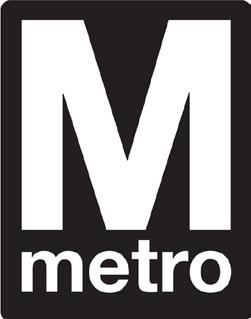
Metro GM/CEO Randy Clarke discussed the agency's Strategic Transformation Plan, growth in ridership, efforts to reduce fare evasion and the revised FY 2025 budget proposal when he spoke at the April Commission meeting. Commissioners asked Mr. Clarke about Metrobus
service in Northern Virginia, plans for purchasing the future 8000-series railcars to replace aging railcars, details in the budget proposal, including wage and salary provisions, and the potential impact of a proposed fare increase on ridership.





The Metro Board approved the FY 2025 Budget and FY 2025–2030 Capital Improvement Program on April 25. The $2.3 billion operating budget maintains gross operating expenses at FY 2024 levels as Metro implements a salary and wage freeze to control costs. While FY 2024 bus service levels will be maintained, Metro will soon
begin additional work on its Better Bus Network redesign effort. Fares will be increased by 12.5% to keep pace with inflation, but late night and weekend fares will be increased by up to 25% with a $2.50 cap.

Metro’s $2.6 billion FY 2025 capital budget maintains the agency’s focus on state of good repair and system reliability needs. However, projected future funding levels will reduce the ability to proactively address other modernization needs. Metro anticipates reaching its debt limit in FY 2028, meaning no new debt could be issued
beginning in FY 2029 unless additional funding is identified.
Metro’s budget includes $463 million in additional investments from the District of Columbia, Maryland and Virginia as well as $181 million in preventive maintenance transfers to fully fund the operating budget.




FY 2025 Subsidy Including $463M in Additional Regional Investment


NVTC's Program Advisory Committee met April 11 to receive updates on and discuss I-66 Commuter Choice, Envision Route 7 implementation planning and NVTC's research program. On I-66 Commuter Choice, the Committee endorsed NVTC staff's recommended Program of Projects for fiscal year 2025 and 2026 funding, presented by Senior Program Manager Ben Owen, which includes 15 projects with a total funding request of $30.4 million. Taken together, the transit enhancements, commuter incentive programs and access to transit improvements
would support 2,700 additional daily trips in the corridor, reduce greenhouse gas emissions by 70% relative to drive-alone travel and save commuters $2.6 million each year in fuel expenses. The program also includes funding for NVTC to conduct an in-depth evaluation of I-66 corridor transit travel needs in partnership with the Department of Rail and Public Transportation and, with significant input from localities and transit agencies in the corridor, identify projects that could help to meet the needs and be candidates for future program funding.
Sen. Mark Warner gestures as Virginia members of the U.S. House hold a check and Gov. Glenn Youngkin looks on.


Vikram Sinha, Senior Program Manager for the Envision Route 7 Bus Rapid Transit (BRT) system provided an update on the project that will enable BRT on the 14-mile route connecting Tysons to the Mark Center in Alexandria, via Falls Church, Seven Corners and Bailey’s Crossroads. The update centers around a Strategic Implementation Plan for the four jurisdictions the project travels through, Arlington and Fairfax Counties and the cities of Alexandria and Falls Church, recognizing short- and medium-term projects to improve bus service on Route 7. The plan focuses on the current Metrobus 28A route and jurisdictional
projects to improve bus service for the region. The 28A has the second highest ridership of any Northern Virginia bus route and the plan will build on this success by recognizing areas for improvement. It will work with key jurisdictional and operational partners to resolve challenges. The purpose of this effort is to layer bus improvements on the existing route to enhance the customer experience quickly as longer-term capital projects come online that enable BRT. The draft plan will be presented atin the June Commission meeting.



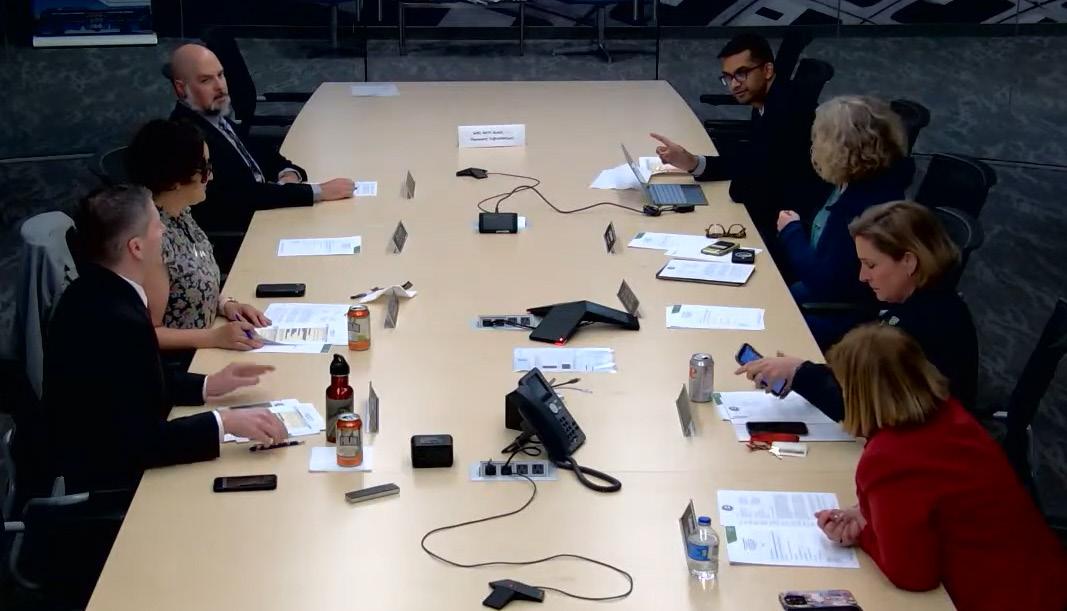
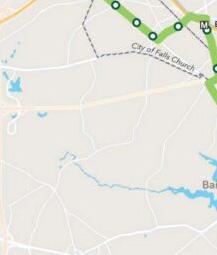


Our newest research report finds that the use of public transit in Northern Virginia reduces up to 160,000 metric tons of carbon dioxide emissions each year and that even diesel-fueled buses provide greater benefits to the environment than people driving in cars, SUVs and light trucks. The "Climate Benefits of Transit in Northern Virginia" report concludes that while personal vehicles are a major cause of pollution, riding trains and buses can mitigate these emissions.
Key Findings:
• The use of public transit in Northern Virginia reduces 120,000 to 160,000 metric tons of CO2 annually.
• All bus fuel types, even diesel buses, are a much greater climate option than using cars.
• While electric cars might eventually produce fewer emissions per mile than fossil fuel buses, electric cars need to make up a much larger proportion of on-road vehicles before other bus fuel types become better options.
• There are opportunities for the region’s jurisdictions and transit agencies to learn from each other when it comes to developing policies that consider how transit could benefit the environment.
The report, authored by NVTC Senior Program Manager Xavier Harmony and Senior Program Analyst Sophie Spiliotopoulos, also makes recommendations.



NVTC staff watching the partial solar eclipse near our offices in Arlington on April 8.







The U.S. Department of Transportation (USDOT) issued a final rule in April that modernizes the Disadvantaged Business Enterprise (DBE) program, which was created over 40 years ago to address and remedy the continuing effects of past discrimination against small businesses owned and controlled by minorities, women and other socially and economically disadvantaged individuals.
Senior Grants and Procurement Manager and DBE Liaison Officer Brittany Sumpter was on hand as Transportation Secretary Pete Buttigieg and other officials announced the rule at USDOT Headquarters. She also attended a three-day USDOT Civil Rights Training Summit to take a deeper dive into the changes and learn how to properly implement them. The changes in the DBE regulations will have a direct impact on the way in which NVTC administers its DBE program, sets DBE goals and provides oversight to its subrecipients.








Executive Director Kate Mattice had an opportunity to share our Value of Transit in Northern Virginia study as part of the kick off of The American Public Transportation Association's (APTA) Legislative Conference in Washington on April 7. The annual event attracts public transit agencies from across the country. Kate shared NVTC's finding that the transit network in Northern Virginia generates $1.5 billion in tax revenue each year for the Commonwealth during a Sunday panel that had more than 100 people in attendance. I also led a discussion of changes to FTA safety and oversight efforts in my role as vice chair of an APTA subcommittee covering federal procedures and regulations.
The following night, Kate spoke at an event at the French Ambassador’s residence and hosted by transit-operator Keolis, sharing more about our Value of Transit study, as well as the state of public transit in our region. Several NVTC staff members joined Kate at the conference's closing reception, held at Union Station, where she connected with transit professionals from the Federal Transit Administration and our regional transit agencies.
Photo: (top left) Nathaniel Ford, Sr., CEO, Jacksonville Transportation Authority; David Zipper, Senior Fellow, MIT Mobility Initiative; Kate; Francis Julien, Keolis. (center) Kate, Paul Smedberg, Metro Board Chair; Paul Skoutelas, President/CEO, APTA and his wife. (bottom) Kate, Veronica Vanterpool, Acting Administrator, Federal Transit Administration.


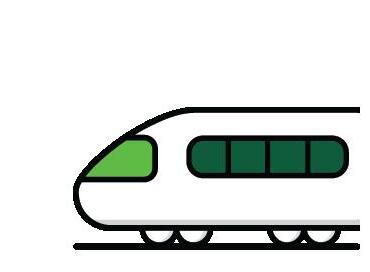
Executive Director Kate Mattice shared the stage with NVTA’s Monica Backmon to share their thoughts about transportation milestones in our region at an evening event sponsored by WTS, an organization that supports women in the transportation industry. The event provided Kate with the opportunity to share NVTC’s legacy
of 60 years as well as her vision of building an organization with a culture that cultivates and supports a diverse body of professionals. The April 23 night event was attended by a broad range of women and men in the transportation sector and moderated by WTS-DC Chapter
President Sophie Guiny of Infrastrategies.

We joined the rest of the world in celebrating Earth Day on April 22. It was an opportunity to use our social media channels to remind followers that riding public transit reduces greenhouse gas emissions and benefits our planet. Thank you to our Transit Fellow Robert Rudesill for his fun and engaging posts and don't forget to follow us if you don't already. We're on X (formerly Twitter), Facebook, Instagram, LinkedIn and YouTube.
If you haven't seen our recent Climate Benefits of Transit in Northern Virginia report, check that out as well. The report details key findings about the use of public transit in our region and makes recommendations to further improve our climate.
 Sophie Guiny, Monica Backmon, Kate
Sophie Guiny, Monica Backmon, Kate
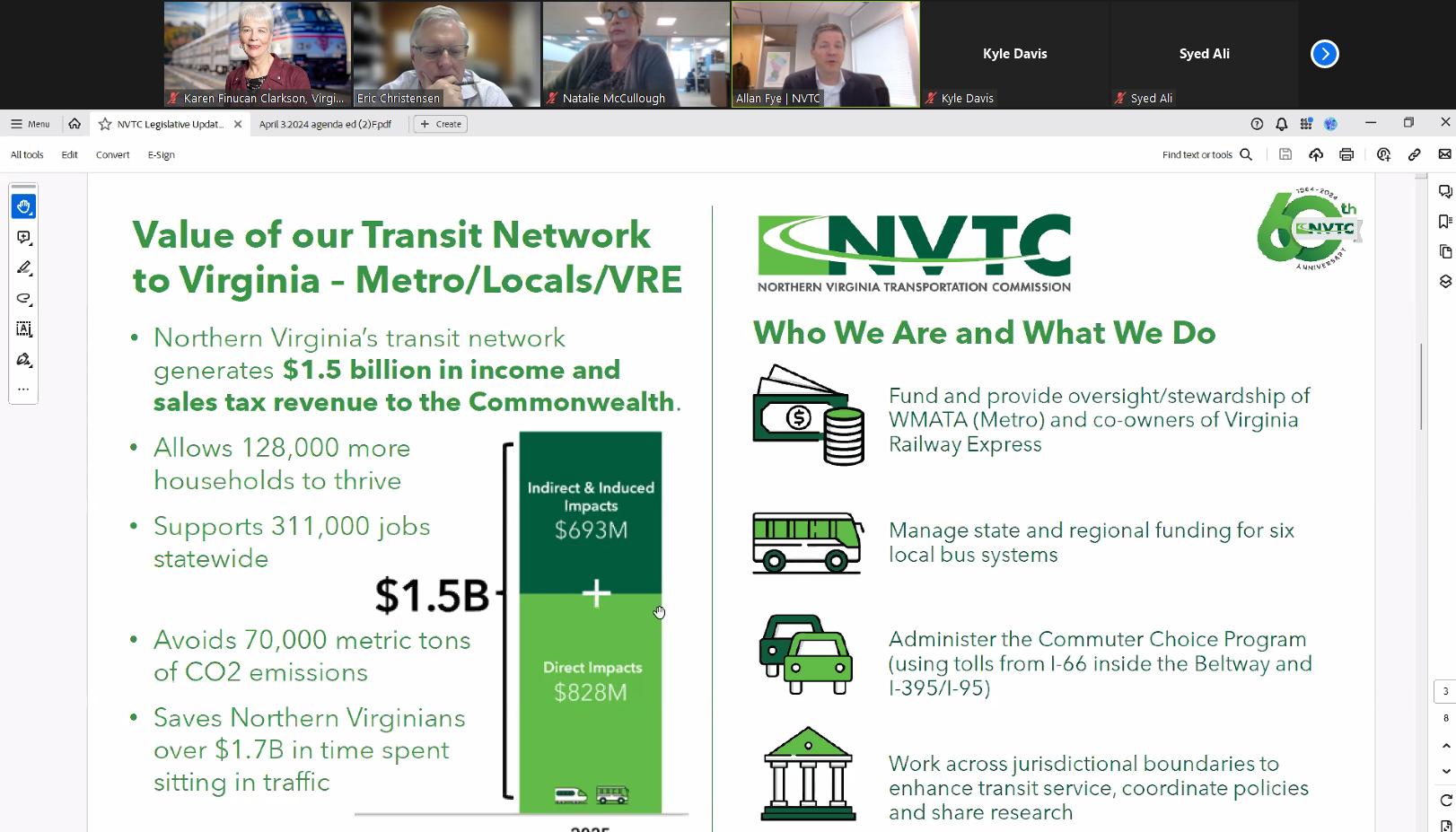
NVTC Director of Programs and Policy Allan Fye briefed the Transportation Association of Greater Springfield (TAGS) in April about a variety of transit-related bills in the 2024 General Assembly Session. He recognized the legislation that would streamline the approval process to expedite the construction of bus stops across the Commonwealth. Allan also provided context


for two NVTC legislative priorities--a request for additional state aid and flexibility under Virginia’s 3% operating cap, both of which would support Metro’s ongoing ridership recovery and maintain frequent, reliable service across Northern Virginia and the Greater Washington region






